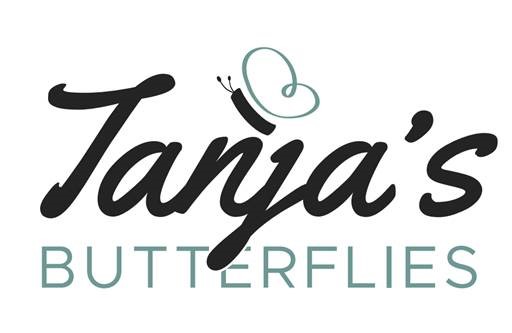
Family OKRs
déformation professionelle is a quite common thing chez Schluer-Lau 😉 Our entrance door is a giant Kanban board. We constantly run experiments on our lives (and the kids…) and about three years ago we introduced family OKRs. OK… what? Mom, I got you.
<boring theory lecture start>
Objectives and Key Results are a relatively new corporate goal setting framework in the history of management by objectives (MBO). The latter was invented by Peter Drucker in 1954. About a decade later Andrew Grove (founder of Intel) developed MBO into the OKR framework as we know it today. A former Intel employee and early advisor of Google (John Doerr) introduced the concept to the Google founders who then went on to implement it there. That’s why Google is often associated with OKRs nowadays.
OKRs are meant to foster focus, accountability, alignment and transparency in an organisation. How? Instead of setting annual goals and then assessing performance once a year (which limits your possibilities to course-correct), you set long-term OKRs (usually annually, in line with your strategy), break them down into smaller timeframes (usually quarterly) and track progress towards them in regular intervalls (usually on a weekly basis). Every quarter you have the chance to modify the goals. In a corporate setting, top-level OKRs are usually issued by management. The individual teams are then asked to create team OKRs which are meant to contribute to the high-level OKRs. <Boring theory lecture end>
Nathalie asked me to write about how Tobias and me are using family OKRs. Here you go:
Step 1: create your family/couple vision for the future
For us this took several long walks and intense conversations. As a couple, we are often operating in a field of tension: One of my biggest fears is getting bored and not exploring my full potential. One of Tobias› main needs is stability and predictability. We ended up with a vision of «creating a family with roots and wings» to reflect the constant dance between these two polarities and the feeling we associate with successfully parenting our kids.
Step 2: Break it down into time horizons
This is sometimes referred to as the rocking chair exercise. Imagine you are 80 years old, sitting on a porch and looking back at your life: What is important for you to be happy right now? What did you accomplish to get here? Which principles were guiding your decisions? For us, the long-term goals involve topics like
- happy and healthy marriage (not something we take for granted)
- financial security (i.e. only working for fun, not because we have to)
- preserving our dignity and autonomy for as long as feasible
etc.
Now it is time to zoom in by decades or life stages, figuring out what might matter the most to you in this phase (p.ex. 10 years from now, 5 years, 2 years, 1 year). We often also ask ourselves: what makes this life stage special? What will not be the same later on? As I am writing this I am looking at the last hand-written letter I received from my grandmother in Italy on a pre-stamped envelope I prepared for her. One of my OKRs in 2021 also involved «making nonna smile», reminding me to get in touch with her in some way once a week and hearing back from her at least once a month. I am extremely glad I did this since only a couple of months later she suffered a stroke and is now in full dementia.
Write down your broad goals until you reach the next cadence you would like to set your actual OKRs for (usually the next year).
Step 3: Set your annual goals
Imagine it’s New Year’s Eve 2023 – what would you like to be different in your life by then? What are the 3-5 areas you want to dedicate your attention to? We usually think about categories such as
- YOU AND ME: our marriage (p.ex. optimizing for «butterfly moments» that feed our relationship)
- CORE FAMILY: For instance, we are currently optimizing for our parents to spend time with our kids as they are still in pretty good health and you never know how long this going to last.
- WELLBEING: for us this involves p.ex. creativity, personal growth, sleep, me-time, but also heavier topics like finally feeling at home in my body (something I have been struggling with since my teens)
- OUR HOME: involves p.ex. whether we feel like we are working as a team in regards to chores and mental load or «make the house great again» (cleaning up the basement etc.).
- US & THE WORLD: spending time in the nature, avoiding «Lagerkoller», collecting memories we will remember
- BUSINESS & FINANCE: can include objectives like figuring out our next career move, avoiding worrying about money (which often includes conversations about the question: how much is enough?)
Step 4: Weekly check-ins
We always try to sit down on Sunday evenings once the kids are in bed and talk about the OKRs we are currently tracking. We mark them as green, yellow or red or track the actual KPI in an excel spreadsheet and also take some notes if there is something we are monitoring or want to look out for.
Of course, what might sound quite straight forward in theory can get really messy in reality. Here are the biggest pitfalls we ran into so far:
- Tracking output instead of outcomes: We are constantly at risk of falling into project management mode and turning the OKR sheet into a to do list… So we are always trying to remind ourselves about the actual goal of each of our projects. Instead of tracking the progress of remodeling the gard, we are framing the OKR as «enjoying time in our garden» – because what’s the point of remodeling everything if we never spend any enjoyable time outside afterwards? In addition, we agree on a weekly task that we commit to accomplishing. This one can be very output driven and goes on the Kanban board 🙂
- Skip the weekly check-in: If you skip it once, you can recover. If you skip it twice, you won’t remember the week before. If you skip it three times, you will stop doing it at all. We missed an entire quarter because we got lazy and stopped having the weekly conversations. Now we are back on track 🙂
- Obsessing about KPIs: In one of our first OKR cycles we were desperate to optimize for sleep (the kids were 3 and 1 years old back then…). Our success KPI was to wake up rested at least five times a week. The reality was: we were so sleep deprived, we did not even remember if we had slept at all… So we ended up with a traffic light system for some KPIs instead (including our love life ;-). If an OKR turns out to be red a couple of weeks in a row, we definitely want to take action. Sometimes you also need proxy KPIs: Once we were trying to increase family harmony – and ended up tracking a yell index for lack of a better metric: How often did we lose our temper with the kids which usually indicates that either we or the kids (or both) were particularly stressed. This was less about trying to yell less and more about trying to spot the underlying issues and addressing them.
- Having too many OKRs: Usually, OKR consultants advise you to go for 3-5 objectives. We have six core areas and sometimes up to 20 objectives. That’s not ideal. We are working on it 😉
To sum it up: Yes, we are nerds 😉 Yes, it has helped us to constantly work «on the system» as opposed to just «within the system». And no, you don’t need to do this. Let me tell you this: What really matters are the regular conversations, spotting challenges early on and feeling in the driver’s seat of your life. You don’t necessarily need OKRs for this, but they can be an interesting tool to frame your conversations.
How are you making sure you are moving in the right direction?
Nathalie, I hope this was helpful 🙂 Everyone else: keep the questions coming if you have a particular question or topic you would like me to explore in one of the next newsletters.
Happy weekend, everyone!
Tanja
This post was first published as part of my thought-letter Tanja’s Butterflies. Feel free to sign up here.



